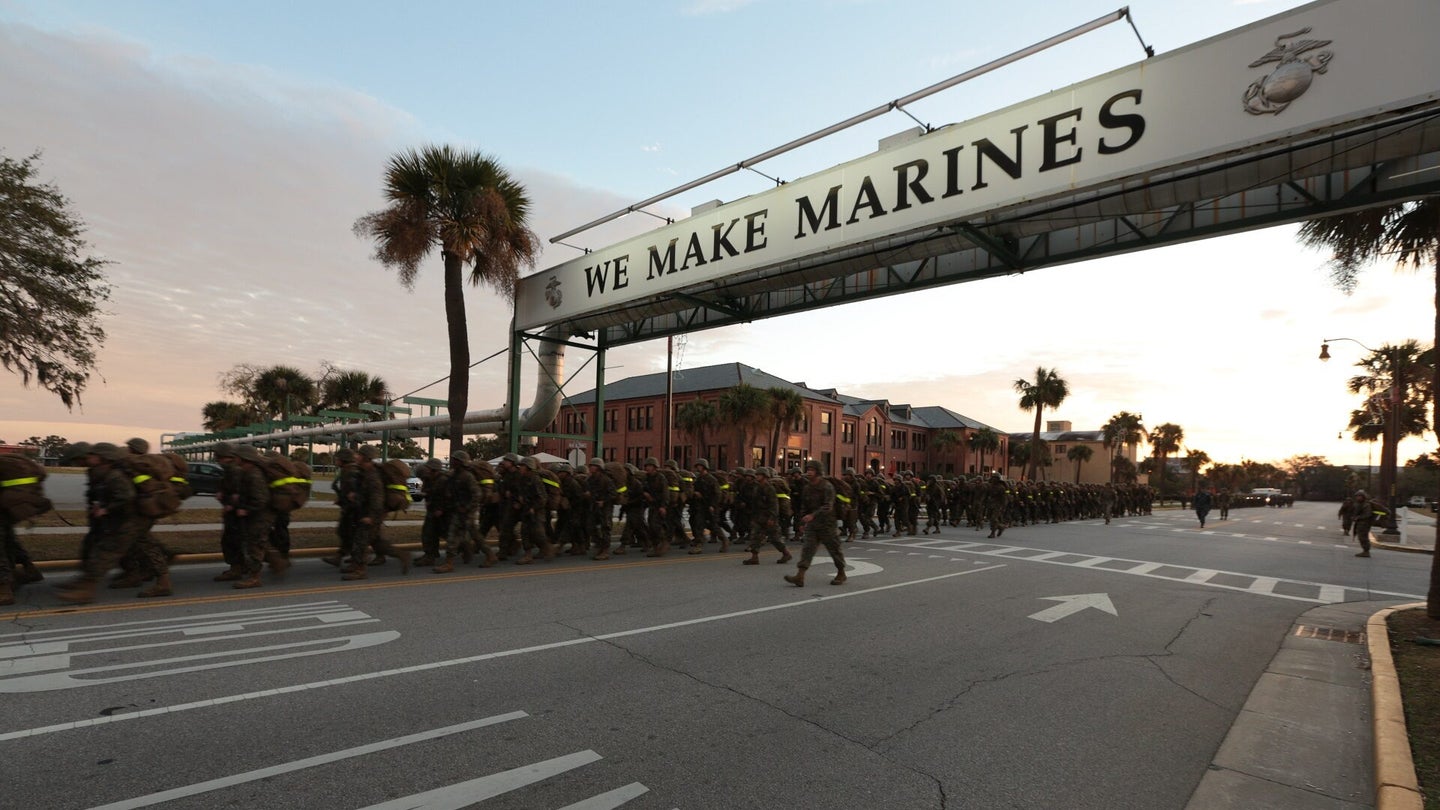The Marine Corps’ legendary training depot will be underwater by 2050
Rising sea levels could lead to daily flooding on Parris Island.

The Marine Corps is preparing for an enemy it can’t stop, but is ready to fight: rising sea levels. The Corps and the Department of Defense are working to create a resiliency plan before climate change puts one of the oldest Marine Corps bases underwater in the next few decades.
That’s the very real risk for the Marine Corps Recruit Depot on Parris Island in South Carolina. The base is one of the main training installations for new recruits, and it is already prone to partial flooding from storms. As sea levels rise and coastlines erode, that is expected to get worse, per reviews, with multiple floods expected each year by 2050. Three quarters of the island could be underwater daily by the end of the century, according to a new report from the Associated Press.
A draft military installation resiliency review published in April outlined threats to the base and nearby Lowcountry communities. It also laid out potential mitigation efforts to adapt to the risk of storms and flooding. It recommended taking steps now to reduce shoreline erosion, protect the bridge linking the island and base to the mainland and updating infrastructure to prevent storm water and runoff from impacting drinkable water supplies.
Heavy damage from worsening storms and climate change are not a hypothetical. Floods and sea level rise have significantly damaged the Atlantic seaboard, both in hurricane season and out of it. The base on Parris Island has already had to evacuate due to being in the path of hurricanes in recent years.
The base is one of the oldest Marine Corps installations. Marines first were stationed there in the 1890s, but became a recruit training depot in 1915. The Marine Corps Recruit Depot on Parris Island isn’t alone in being at risk – more than 1,700 bases worldwide could be impacted by rising sea levels – but the extremely low lying nature of Parris Island presents a unique vulnerability. Parris Island itself is heavily composed of salt marshes and the highest point is barely more than a dozen feet above sea level. That already makes the base at risk of flooding, and with sea levels rising, that risk only increases.
Other bases have seen billions of dollars in damage from hurricanes. In October 2018, Hurricane Michael directly hit Tyndall Air Base in Florida. It heavily damaged base structure and rendered 17 of the 55 F-22 Raptor fighter planes out of commission. The Pentagon put the damage at $4.7 billion. The Department of Defense’ own Climate Adaptation Plan, published last September, noted that damage from these types of severe weather events cost tens of billions of dollars annually and impact the military’s capabilities.
So what happens if sea levels keep rising to unsafe levels for the Marine Corps Recruit Depot?
Since that is seemingly inevitable, the Pentagon is exploring different types of mitigation measures to keep the base on Parris Island open. Some are smaller ones, such as updating culverts to handle rainwater, not building on the marshlands and other drainage improvements, per the Associated Press. Larger efforts could include building a seawall around the base. Although it’s not the current strategy, relocating the base is not off the table.
Beyond the physical barriers recommended for the base, it needs to take other measures will need to be taken to address the impacts of the changing climate. The Associated Press cited the Armed Forces Health Surveillance Branch in pointing out that more than 500 people suffered from heat-related illnesses in the period between 2016-2020. That is likely to continue to be a threat, as are the impacts of worsening humidity and temperatures which could potentially limit the training that could be done on the base.
The latest on Task & Purpose
- Russian troops are proving that cell phones in war zones are a very bad idea
- Air Force disciplines C-130 crew for ‘unplanned’ landing to pick up motorcycle in Martha’s Vineyard
- Commandant walks back possibility of Marines skipping boot camp
- Air Force pilots explain why the F-22 Raptor is a ‘beast’ in aerial combat
- Sailors from my old ship are dying by suicide. I may know why
Want to write for Task & Purpose? Click here. Or check out the latest stories on our homepage.
